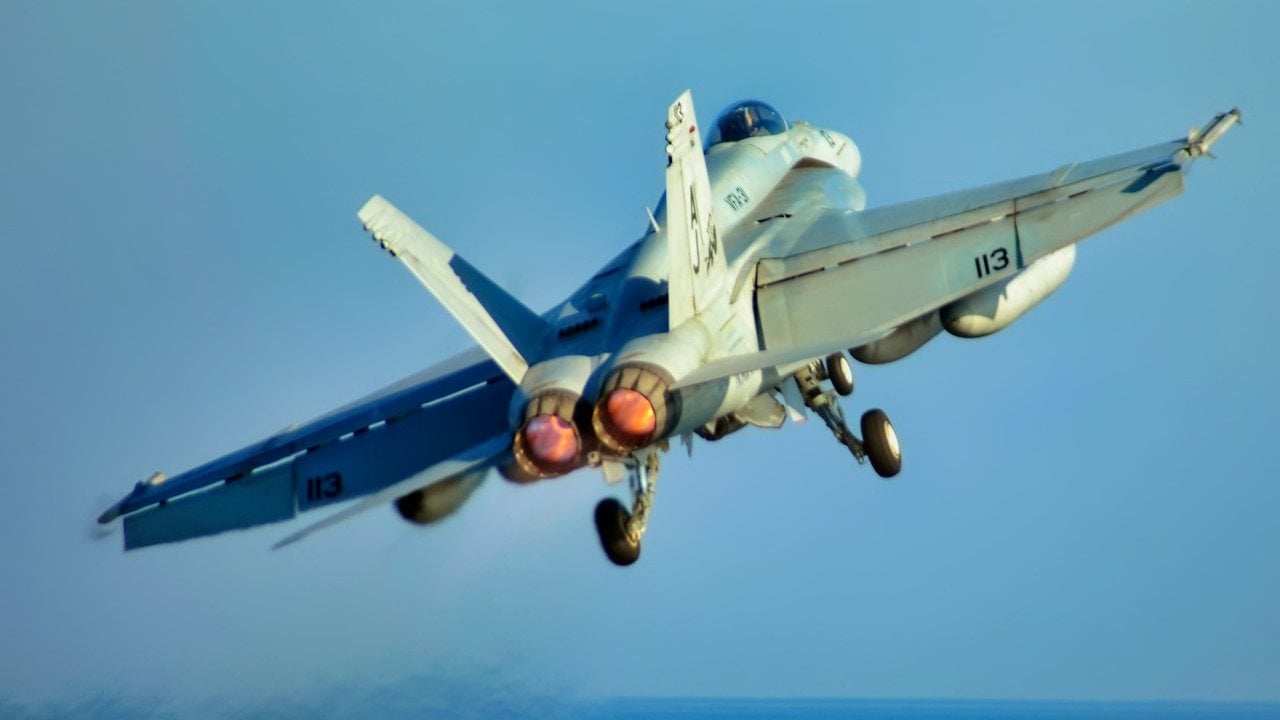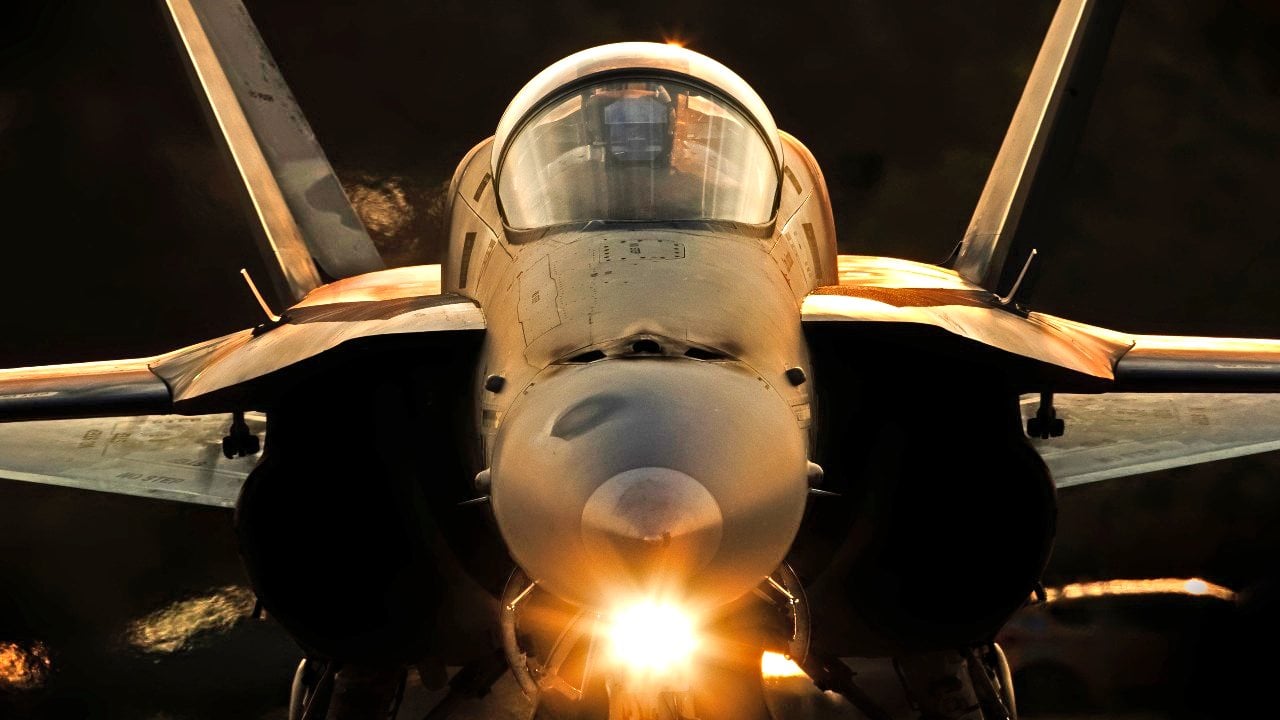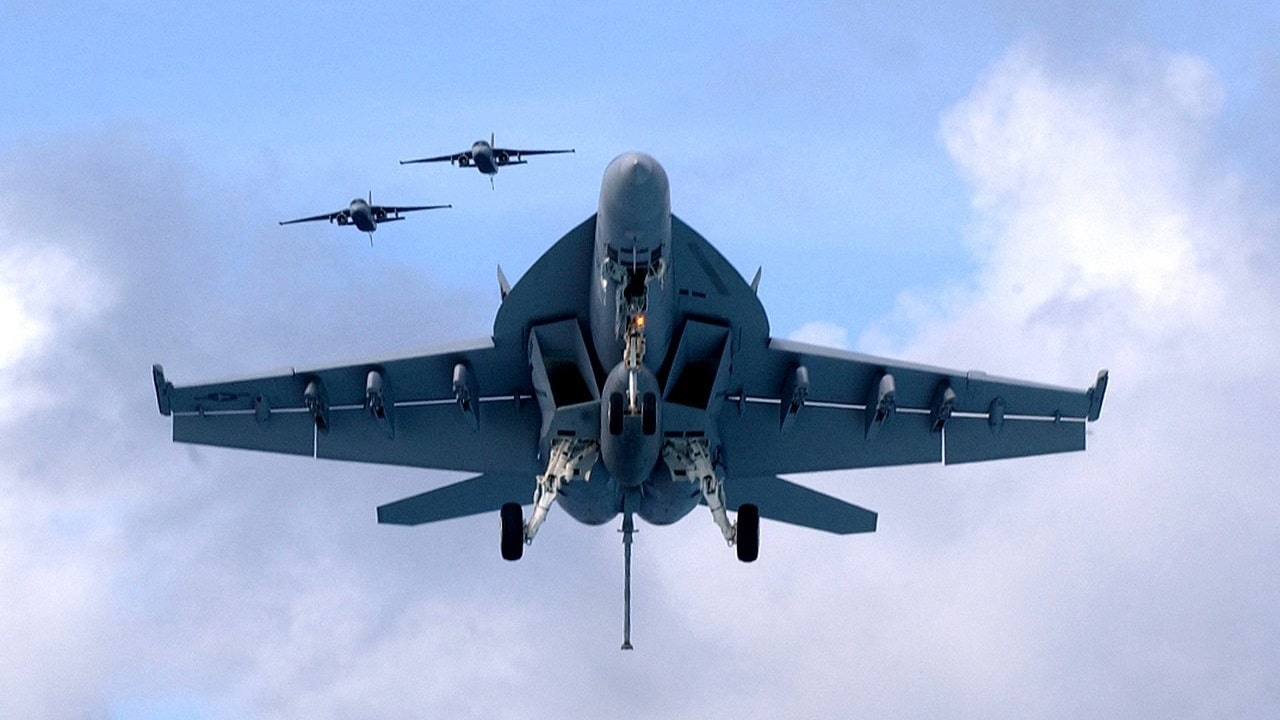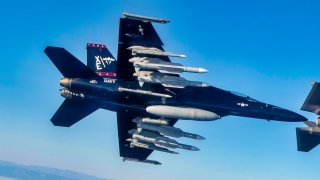Chinese Jets Stand No Chance Against a “Buffed” F/A-18 Super Hornet
The AIM-174B can reach targets more than 200 miles away. That is an incredible upgrade from the existing munitions and means that U.S. fighter jets could shoot down Chinese aircraft before they even come in range to be dangerous.
What You Need to Know: The U.S. Navy recently showcased an F/A-18 Super Hornet loaded with advanced air-to-air munitions at Exercise Gray Flag 2024, highlighting an enhanced strategy to counter Chinese aircraft from long distances.

-Armed with new AIM-174B missiles, derived from the Navy’s SM-6 missile, the aircraft can engage targets over 200 miles away, far outmatching traditional AIM-120 and AIM-9 ranges.
-This approach reflects the Navy’s focus on upgrading fourth-generation jets with cutting-edge munitions, as demonstrated by the addition of the AGM-158C LRASM anti-ship missile.
-This boosts the F/A-18's combat role in fifth-generation airspace, enhancing its effectiveness in a near-peer Indo-Pacific conflict.
Navy’s F/A-18 Super Hornet Now Equipped to Counter Chinese Aircraft at 200 Miles
A recent photoshoot revealed how the U.S. Navy plans to shoot down Chinese aircraft before they even come in range to be dangerous.
Publicly released pictures showed a “buffed” F/A-18 Super Hornet carrying some of the most advanced air-to-air munitions.
A Sexy F/A-18 Super Hornet
At the conclusion of Exercise Gray Flag 2024 in September, an F/A-18 Super Hornet from the Air Test and Evaluation Squadron (VX) 9 “Vampires” flew alongside a F-35C Lightning II and a F-15E Strike Eagle sporting quite an interesting loadout.
The aircraft was armed to the teeth with four CATM-174B, three CATM-120, and two CATM-9X missiles, as well as a targeting pod and an IRST (Infrared Search and Track) mounted on an external fuel tank.
As the Aviationist reported, that was the second time the F/A-18 Super Hornet carried that loadout as part of Gray Flag.
The 120 AIM-120 Advanced Medium Range Air-to-Air Missile (AMRAAM) radio-homing missile and the AIM-9 Sidewinder heat-seeking missile are staples of an air-to-air combat loadout. However, the presence of the AIM-174B shows the increased use of a new air-to-air combat munition.
Based on the Standard Missile 6 (SM-6), the AIM-174B offers a much greater range than older munitions like the AIM-120 and AIM-9.
For example, the AIM-120 has a range “in excess of 30 miles,” while the AIM-9 has a maximum range of less than 20 miles.

In comparison, the AIM-174B can reach targets more than 200 miles away. That is an incredible upgrade from the existing munitions and means that U.S. fighter jets could shoot down Chinese aircraft before they even come in range to be dangerous.
The SM-6 is used by the Navy’s guided-missile cruisers, destroyers, and frigates; has a range of 230 miles; and reaches speeds of Mach 3.5 (almost 2,700 miles per hour).
As part of the exercise, the Navy worked with the Air Force and Army to conduct over 600 aircraft sorties and test dozens of air and land systems.
“Gray Flag 2024 was an unparalleled opportunity to bring together diverse branches of the military, academic institutions, science and technology experts, and allied forces,” said Capt. David Halpern, Naval Test Wing Pacific commodore.

Pairing Old Aircraft With New Munitions
The U.S. Navy has been increasingly experimenting with the capabilities of its F/A-18 fleet in an attempt to make the fourth-generation fighter jet more effective in a fifth-generation air space.
For example, over the summer, the Navy outfitted an F/A-18 Super Hornet with the AGM-158C LRASM, a new long-range stealth anti-ship missile designed to sink Chinese surface combatants in the event of a conflict in the Indo-Pacific.
Pairing older platforms with cutting-edge munitions is an excellent way to circumvent disadvantages the older aircraft might have in a fifth-generation air space. To be sure, equipping an F/A-18 Super Hornet with a stealth munition doesn’t make the fighter jet a fifth-generational aircraft capable of going up against Chinese stealth fighter jets.
But it does increase its capabilities and chances of survival in a near-peer conflict.
About the Author
Stavros Atlamazoglou is a seasoned defense journalist specializing in special operations and a Hellenic Army veteran (national service with the 575th Marine Battalion and Army HQ). He holds a BA from the Johns Hopkins University and an MA from the Johns Hopkins’ School of Advanced International Studies (SAIS). His work has been featured in Business Insider, Sandboxx, and SOFREP.
Image Credit: Creative Commons.


